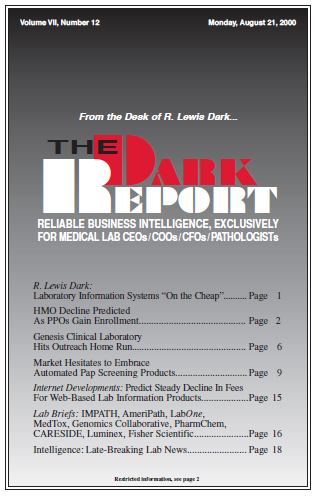CEO SUMMARY: Technology to enhance and improve conventional Pap smear screening was introduced into the clinical marketplace almost five years ago. But the clinical laboratory industry has yet to embrace these various technologies in any meaningful way. Like the introduction of liquid preparation methods for Pap smear testing, these various technologies to enhance and automate …
Market Hesitates to Embrace Automated Screening Products Read More »
To access this post, you must purchase The Dark Report.


